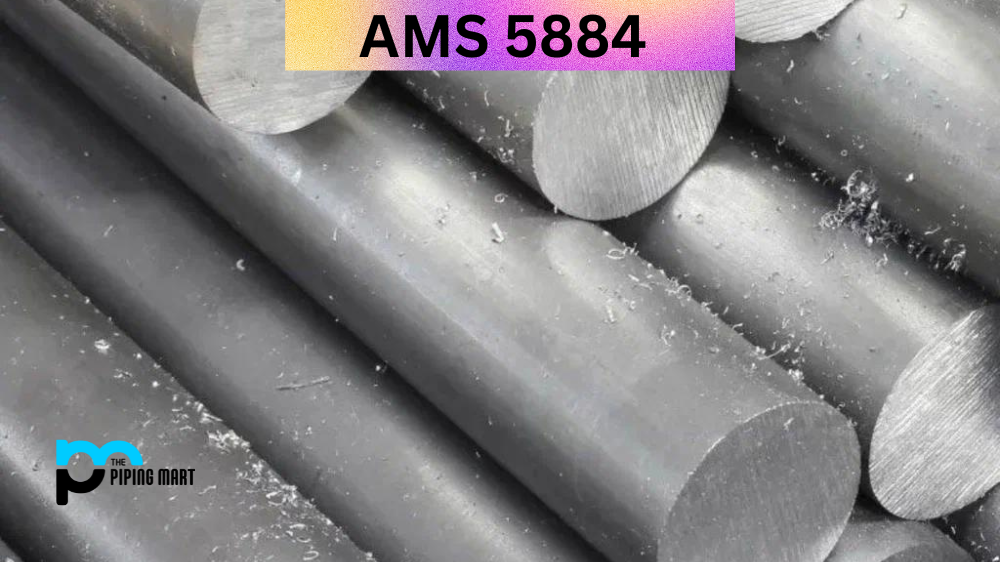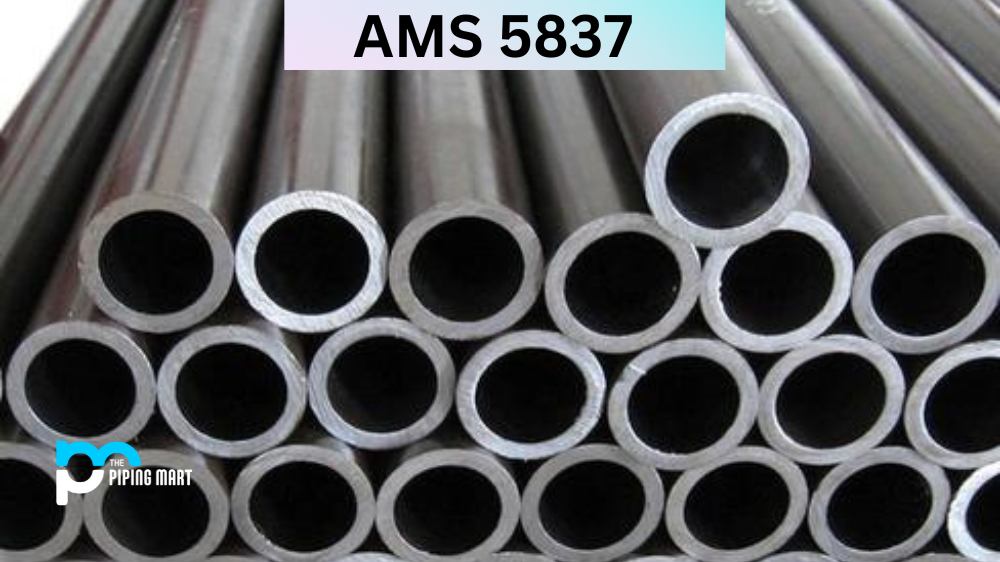Bronze 954 is an alloy of copper, tin, and zinc. It is a corrosion-resistant metal used in many industrial and commercial applications. This guide will provide an in-depth look into the composition, chemical properties, mechanical properties, physical properties, uses, corrosion resistance, heat resistance, heat treatment, machining process, and welding process of Bronze 954.
Bronze 954 Composition
The composition of Alloy 954 Aluminum Bronze (C95400) consists of 94% copper (Cu), 4% tin (Sn) and 2% zinc (Zn). These three metals are known to form strong alloys due to their excellent bond characteristics. The Cu content gives the metal strength, while the Sn content provides flexibility and malleability. Zn provides hardness and increased tensile strength at higher temperatures.
|
Chemistry Information
|
|
|
Element
|
Percentage
|
| Al | 11 |
| Cu | 85 |
| Fe | 4 |
Bronze 954 Chemical Properties
The chemical properties of Bronze 954 make it ideal for a wide range of industrial applications. It has excellent corrosion resistance due to its high Cu content, which helps form a protective oxide coating when exposed to air or water. Additionally, it is resistant to most acids except hydrochloric acid, which can cause pitting and surface discoloration. It also has good electrical conductivity due to the presence of Cu and Zn.
Bronze 954 Mechanical Properties
The mechanical properties of 954 Bronze include high tensile strength even at elevated temperatures and good strength retention after cold working or heat-treating processes. It has good ductility making it easy to shape into various forms without fracturing or cracking during the forming process. It also has excellent fatigue strength, making it suitable for dynamic components such as valves or pumps that experience frequent cyclic loading conditions over long periods without failure or degradation in performance.
| Properties | Metric | Imperial |
|---|---|---|
| Hardness, Brinell ( as cast; 3000 kg) | 170 | 170 |
| Hardness, Brinell(TQ50 temper; 3000 kg) | 195 | 195 |
| Hardness, Rockwell B (as cast) | 83 | 83 |
| Hardness, Rockwell B (TQ50 temper) | 94 | 94 |
| Tensile strength, ultimate (as cast) | 515 MPa | 74700 psi |
| Tensile strength, ultimate (TQ50 temper) | 620 MPa | 89900 psi |
| Tensile strength, yield ( as cast) | 205 MPa | 29700 psi |
| Tensile strength, yield(TQ50 temper) | 310 MPa | 45000 psi |
| Elongation at break (TQ50 temper, in 50 mm) | 8% | 8% |
| Elongation at break (as cast, in 50 mm) | 12% | 12% |
| Reduction of area (TQ50 temper) | 6% | 6% |
| Reduction of area (as cast) | 12% | 12% |
| Creep strength (for 10E-5%/h, at 425°C) | 20.0 MPa | 2900 psi |
| Creep strength (for 10E-5%/h, at 370°C) | 30.0 MPa | 4350 psi |
| Creep strength (for 10-E5%/h, at 315°C) | 51.0 MPa | 7400 psi |
| Creep strength (for 10E-5%/h, at 230°C) | 115 MPa | 16700 psi |
| Modulus of Elasticity | 110 GPa | 16000 ksi |
| Compressive strength ( as cast) | 940 MPa | 136000 psi |
| Compressive strength (TQ50 temper) | 1070 MPa | 155000 psi |
| Poisson’s ratio | 0.316 | 0.316 |
| Charpy impact (keyhole, TQ50 temper) | 9.00 J | 6.64 ft-lb |
| Charpy impact (keyhole, as cast) | 15.0 J | 11.1 ft-lb |
| Izod impact (TQ50 temper) | 15.0 J | 11.1 ft-lb |
| Izod impact (as cast) | 22.0 J | 16.2 ft-lb |
| Fatigue strength (@# of cycles 1.00e+8 , reverse bending) | 240 MPa | 34800 psi |
| Machinability (UNS C36000 (free-cutting brass) = 100%) | 60% | 60% |
| Shear modulus | 41.0 GPa | 5950 ksi |
Bronze 954 Physical Properties
The physical properties of grade 954 include a bright yellow colour which can be polished to a high shine if desired for decorative purposes; however, it does tend to tarnish quickly when exposed to air or moisture, which will dull the luster over time unless regularly maintained with polishing compounds or waxes explicitly designed for this purpose. Its density is 8 g/cm3 with a melting point range between 1120°C – 1170°C depending on composition variations among different manufacturers’ products.
|
Physical Properties 954 Brass
|
|||||
| Density | 0.295 lb/in3 | ||||
| Ultimate Tensile Strength | 74.7 ksi | ||||
| Yield Tensile Strength | 29.7 ksi | ||||
| Shear Modulus | 5,950 ksi | ||||
| Hardness Rockwell | Brinell | B83 | 170 | ||||
| Elongation at Break Percentage | 12% | ||||
| Modulus of Elasticity | 16,000 ksi | ||||
| Poisson’s Ratio | 0.32 | ||||
| Machinability Percentage | 60% | ||||
| Melting Point | 1,877-1,900 °F | ||||
| Specific Heat | 9.3 x 10^-2 BTU/lb-°F | ||||
| Thermal Conductivity | 409 BTU-in/hr-ft^2-°F | ||||
| Electrical Conductivity | 13% IACS | ||||
Bronze 954 Equivalent
- ASME SB148
- ASME SB271
- ASTM B148
- ASTM B271
- ASTM B30
- ASTM B505
- ASTM B763
- ASTM B806
- MIL C-11866
- QQ C390
- SAE J461
- SAE J462
Bronze 954 Uses
Due to its excellent corrosion resistance, machinability, and wear resistance, bronze is commonly used in marine applications such as propellers and bearings as well as outdoor architectural features such as fountains or monuments where aesthetic appeal is desired along with durability under harsh weather conditions like salt spray exposure from ocean winds or extreme temperature swings common near coastal areas during winter months. They are also popular in automotive components such as pistons due to their ability to withstand high load bearing pressures without deforming under compression loads typical in engine operations while resisting wear caused by friction against other moving parts inside the engine block during combustion cycles over extended periods without requiring frequent replacement like aluminum components would need due to abrasion fatigue caused by contact with other metallic surfaces inside the cylinder chamber during each firing cycle each time the spark plug ignites fuel vapor inside the combustion chamber when cranking up an engine after being idle for some time creating additional wear on these parts unlike what would normally occur during regular operations when these parts have already been broken-in by previous firing cycles already experienced since initial startup resulting in more consistent service life expectancy than what could be expected from any other type material at this level because bronze offers both superior wear resistance along with good thermal conductivity allowing heat generated by friction inside cylinders during combustion cycles created by burning fuels like gasoline diesel oil propane etcetera providing lubrication protection against excessive abrasion that could result from direct contact between moving parts subjecting them too much friction reducing operational efficiency leading too unscheduled maintenance costs not experienced using alternate materials like cast iron aluminum magnesium etcetera.
Corrosion Resistance
Bronze 954 is widely used in various products and components due to its superior corrosion resistance properties. This alloy is highly resistant to seawater, salt solutions, and some acids, making it a perfect choice for marine applications. Even when exposed to high concentrations of oxygen, Bronze 954 remains intact. Furthermore, it does not react to sulfides or halogens, making it a reliable metal for many industrial applications. In summary, the ability of this material to resist corrosion— even if exposed to extreme environments— makes it an ideal ally for long-lasting use.
Heat Resistance
Bronze 954 from Dura-Bar Metal Services offers superior heat resistance capabilities compared to traditional grey iron and standard carbon steel alloys. Its special blend of elements allows for better performance in extremely high-temperature applications up to 250 degrees Celsius. Additionally, it is more cost-effective than other alternatives, making it a popular choice in the automotive and energy industries and many other manufacturing plants. An innovative alloy with excellent machinability, Bronze 954 is resistant to corrosion and provides users with an exceptionally durable material that can withstand extreme conditions.
Heat Treatment
Heat-treating Bronze 954 is becoming increasingly important as the demanding applications of this material continue to multiply. During this process, the metal is heated to specific temperatures for a certain period before being rapidly cooled. This careful manipulation of temperature and cooling causes structurally beneficial changes to the metal’s properties, increasing its toughness and strength while improving its ability to resist abrasion and corrosion. Depending on the specific application it is intended for, experts can adjust heat treatment protocols accordingly to maximize their desired results. Heat-treating Bronze 954 allows us to exploit its incredible potential and incorporate it into more advanced uses.
Machining
Bronze 954 represents the pinnacle of machining excellence, with its properties making it ideal for various applications. Debuting in the 20th century, Bronze 954 promises greater stability, durability and tensile strength than conventional alloys. Used almost exclusively by the aerospace industry due to its revolutionary performance, it has become an industry standard among professionals who require precision in their workmanship. Machining this alloy can be challenging due to its increased hardness and wear resistance, yet when handled properly; these challenges can become opportunities to create unmatched products in quality and longevity. In short, Bronze 954 is a prime example of what machining can achieve at its highest level.
Welding
Bronze 954 Welding is an incredible innovation that combines traditional metalworking with advanced technology to create strong and reliable welded connections. This welding method offers strength, corrosion resistance, and ductility while maintaining reduced heat input and distortion levels. Using inert shielding gasses in Bronze 954 Welding helps ensure the precision placement of welds, protecting any intricate design details embedded or cut into the item being welded. With its precise control over temperature and application technique, this special process is excellent for a wide range of materials and applications, including the repair, welding and fabrication of high-end stainless steel accessories. Bronze 954 Welding ensures the highest quality welds while consistently delivering consistent results.
Conclusion
Bronze 954 offers exceptional corrosion resistance coupled with good machinability making it an ideal choice for use in numerous marine applications including propellers bearings fountains monuments automotive pistons and more where aesthetic appeal combined with durability are desired under harsh weather conditions especially near coastal areas where salt spray exposure can be frequent yet still remain functional even under extreme temperature swings common during winter months while still retaining full functionality without requiring frequent replacement due its superior wear resistant qualities compared other materials such offer similar benefits but not same level reliability nor longevity offered bronze allowing users enjoy peace mind knowing product will last through years come no matter what mother nature throws way giving them best value money when choosing right material job task hand whether small scale residential projects large scale commercial endeavors alike leaving nothing worry but results achieved thanks utilizing most robust material available market today offering quality assurance needed complete job successfully time first time around every single time!
Meet Heer, a dynamic and driven writer learning tricks of her trade in the metal industry. With a background in Digital Marketing, Heer brings a unique perspective to her writing, sharing valuable insights. Apart from blogging she like reading and hiking.




